Building links is a crucial component of a winning SEO strategy, but the process can be a bit tricky. To create a strong backlink profile, you need to work hard and be patient in your efforts to get high-quality links. The quality of your links is crucial because it determines whether Google sees your site as authoritative and worthy of appearing at the top of the SERP.
In this article, we’ll break down where to look for troublesome backlinks, how to avoid them, and what to do if you already have some.
Let’s get started!
What are toxic backlinks?
Google doesn’t officially use the term “toxic backlinks”. Instead, it calls them “link spam,” particularly when referring to links that try to manipulate Google’s algorithms and rankings. Some examples of this type of manipulation include buying and exchanging links, getting links from low-quality websites, using automated tools for link building, etc.
But in the SEO community, there is a widespread distinction made between these three terms: toxic, spammy and manipulative backlinks.
Toxic backlinks
Toxic backlinks are backlinks that can pose a threat to your website and detract from your site’s organic performance on Google. Several SEO tools use this term to label potentially harmful backlinks.
Each platform has its own algorithm for defining certain links as toxic. The criteria used to determine this is greatly dependent on the link building tool. For instance, SE Ranking considers various parameters, including instances like a suspicious ratio of incoming links to external links on donor websites, or the frequent appearance of a domain in disavow files, among others. We will discuss which links are most commonly regarded as toxic further on in this article.
Manipulative backlinks
Manipulative backlinks are made specifically to manipulate PageRank and other Google ranking algorithms in order to improve SERP positions. They generally have no regard for user experience or contextual relevance. Some of these backlinks might yield short-term results but have a long-term negative impact on your site.
Common manipulative backlink practices include:
- Paying for links or participating in link exchanges.
- Creating a private network of blogs that all link to a specific site.
- Automatically generating a large number of low-quality or irrelevant links.
- Guest posting for links with no consideration for relevance, usefulness, and quality.
- Other link schemes.
Spammy backlinks
Spammy backlinks appear sporadically and aren’t always created with the intent to manipulate rankings. You can’t really control when they appear.
- They might come from random foreign websites that post lots of low-quality content, sometimes copied from elsewhere.
- You might get spammy links from scraper sites, low-quality directories, websites that publish domain stats, etc.
- Spammy links can also show up in comments.
Backlinks of this type can either be created using automated software or placed carelessly by your competitors.
And nowadays, Google’s algorithms are good at spotting and ignoring spammy links.
The main difference between these terms? You have no control over the appearance of spammy backlinks. On the other hand, manipulative links must be initiated by you. Both spammy and manipulative links can be potentially toxic for your website, but that doesn’t mean they always will be.
How do toxic backlinks affect your website?
The effects of different types of backlinks on a website’s ranking varies. In the vast majority of cases, spammy links pointing to a site will not harm its ability to rank. Google can identify and ignore spammy backlinks. It knows that you have no control over their appearance.
This means that if you have viral content or if your competitors directed spammy links over to your site, you don’t need to worry too much about their negative impact. In fact, hear it from John Mueller himself:

John Mueller
Google Search Advocate
If you’re seeing individual links that pop up, and you say, oh this looks like a spammer dropped the link or whatever, I would completely ignore those…..they happen to every website and Google’s system has seen them so many times over the years, and we’re very good at just ignoring.
It’s totally normal to have some percentage of low-quality spammy links, but manipulative ones should be avoided at all cost. If Google determines that some backlinks on your site are being used to affect your ranking positions, it may apply penalties. This will lower your site’s position in SERPs and reduce its overall organic traffic.
There are two scenarios in which this backlink penalty may occur: algorithmic and manual.
Algorithmic penalty
These penalties are applied automatically by Google’s algorithms whenever they detect a violation of spam policies. If your website receives an algorithmic penalty, you will not receive a notification in Google Search Console. However, you may see a drop in rankings, traffic, or even the removal of your pages from search results.
The search engine giant is constantly improving its SpamBrain algorithm, which focuses on detecting and neutralizing both link-buying sites and sites used to pass outgoing links. Google also releases other spam updates on a consistent basis. This is to enhance the algorithms’ ability to identify not just new types of spam but other violations. It can detect unnatural links and combat the websites sending them. For example, recent improvements, including minor updates and a general spam update, were aimed at addressing these issues.
Keep an eye on all algorithm updates to prevent your website from getting penalized under Google’s new rules.
All that being said, Google’s algorithms are not perfect. They cannot detect all unnatural links. For better spam control, Google employs a team of reviewers to monitor and work alongside its algorithms.
Manual action
Google has a team of reviewers who check websites for potential violations of Google’s spam policies, such as toxic links. If a reviewer detects a toxic backlink profile (one that attempts to manipulate Google’s search index), they may manually penalize the site. This will cause the site to be ranked lower or removed from search results.
If your website places irrelevant and useless links throughout your content, or if you have low-quality articles written solely for the purpose of building backlinks, you might be penalized by Google raters. A more complete and detailed list of violations for which your site can be penalized is outlined here.
If your site is affected by a manual action, you will receive a notification in Google Search Console.
Keep in mind: These penalties are rare nowadays. People tend to see drops in traffic and rankings without any notifications.
How to identify toxic backlinks
Identifying unnatural links is crucial for maintaining a healthy and effective off-page SEO strategy. It also preserves your site’s overall organic performance. To find backlinks with the potential to harm your website’s SEO, analyze your backlink profile on a regular basis. Analyzing essential backlink metrics allows you to quickly identify suspicious looking links. Let’s break down the most common signs of toxicity.
Signals of toxic backlinks
- Paid links that can easily be identified as such.
Links purchased or exchanged for other links (or favors) exclusively for the sake of cross-linking and not marked as sponsored are a direct violation of Google’s spam policies.
Example
The website lifewire.my.id only has articles with links to external sites that cover a suspiciously diverse range of topics. It also displays a large Advertise Here button in the main menu. Not only that, the links in the site’s articles aren’t marked as sponsored, but it’s obvious that they were purchased. The site also looks low-quality and unfinished. This would suggest that its primary purpose is to sell post placements with backlinks.
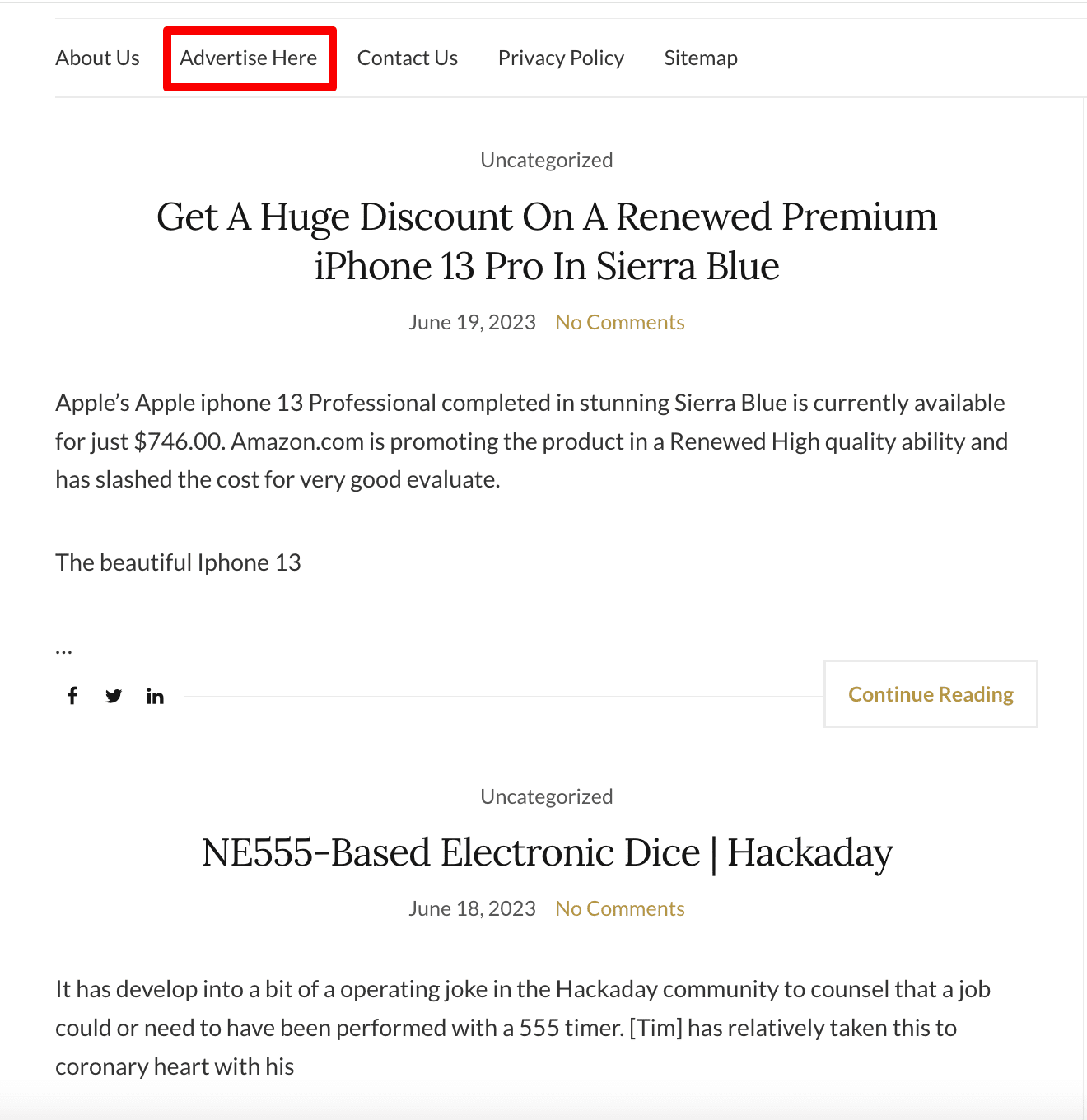
If you don’t want to be penalized for buying and selling links, place rel=”nofollow” or rel=”sponsored” attribute values on the page. This will prevent your site from violating spam policies and facing penalties.
- Links from irrelevant websites.
Links that come from low-quality websites unrelated to your website’s topic are often useless for users. Google’s algorithms will easily spot this and identify it as spam. The link may then be ignored or result in a penalty. You can examine these articles to figure out which ones have been created solely for the purpose of acquiring backlinks.
Example
A guest post on the best CBD products is published on a website about cars.
- Links with unnatural anchor text.
Anchor texts that are too keyword-rich or repetitive, hidden, or do not accurately describe the linked page, may not be considered organic.
Example
Despite its health-related theme, URLs related to Forex and cryptocurrency are among the top backlink anchors for the kennedyscountrycollection.com website. Relevant anchors are also present but there are only two. Neither of them show any diversity or have variations, signifying their unnatural origin.
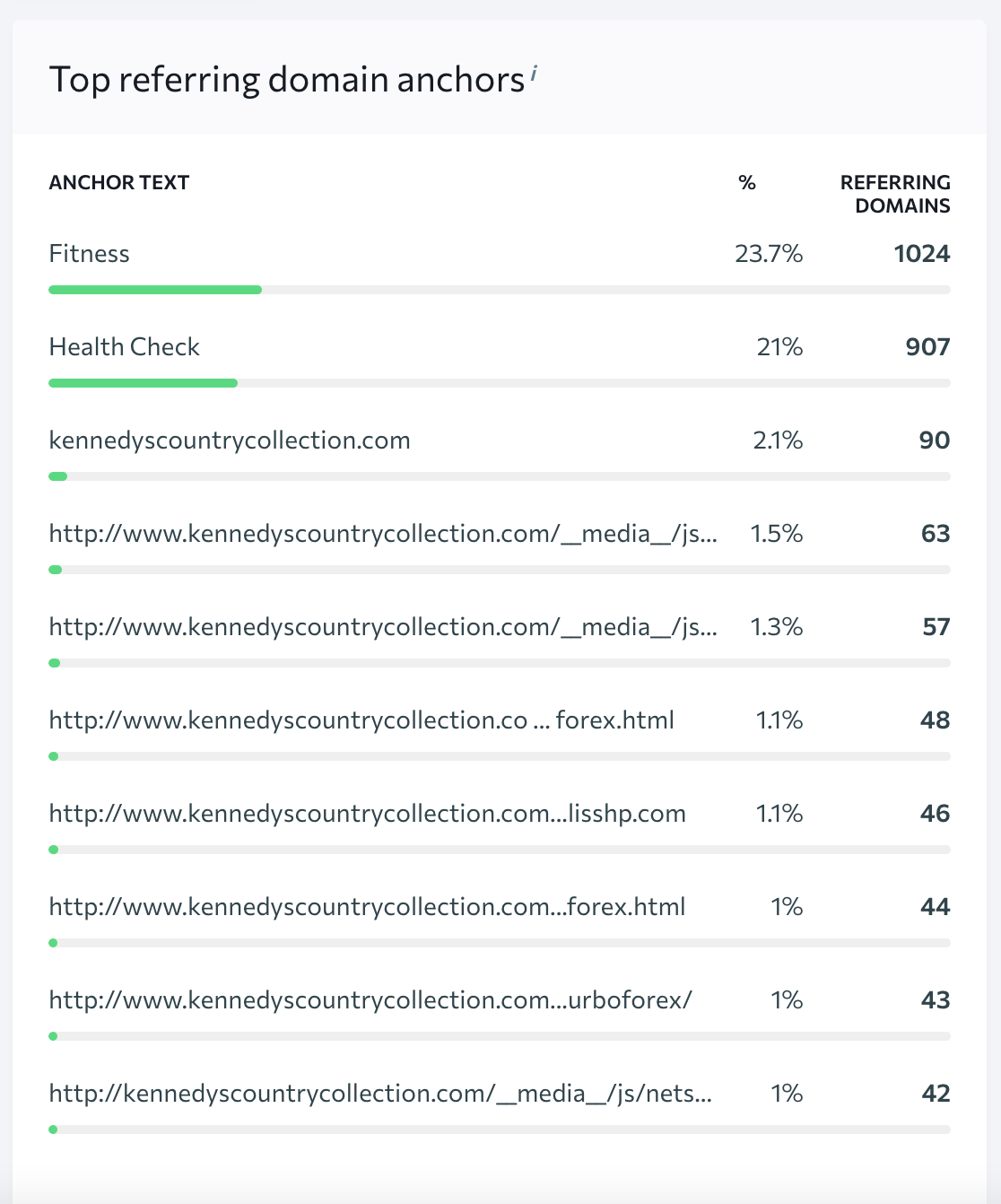
- Referring domain with suspicious number of external links.
Pay attention to excessive external links on pages that don’t appear useful or relevant.
Example
All text on the homepage of the theglobe.net website is linked to other sites.

- Old referring domain with a low domain authority score.
If an old referring domain receives minimal traffic or shows a notable negative trend in traffic dynamics (despite having traffic-generating content) while also having a low domain authority score, the website may lack credibility and pass minimal link juice. In fact, it’s most likely just a spammy website.
Example
The Domain Trust score of a referring domain is 3. However, it is not a new website, as backlinks from it have been appearing since 2018.
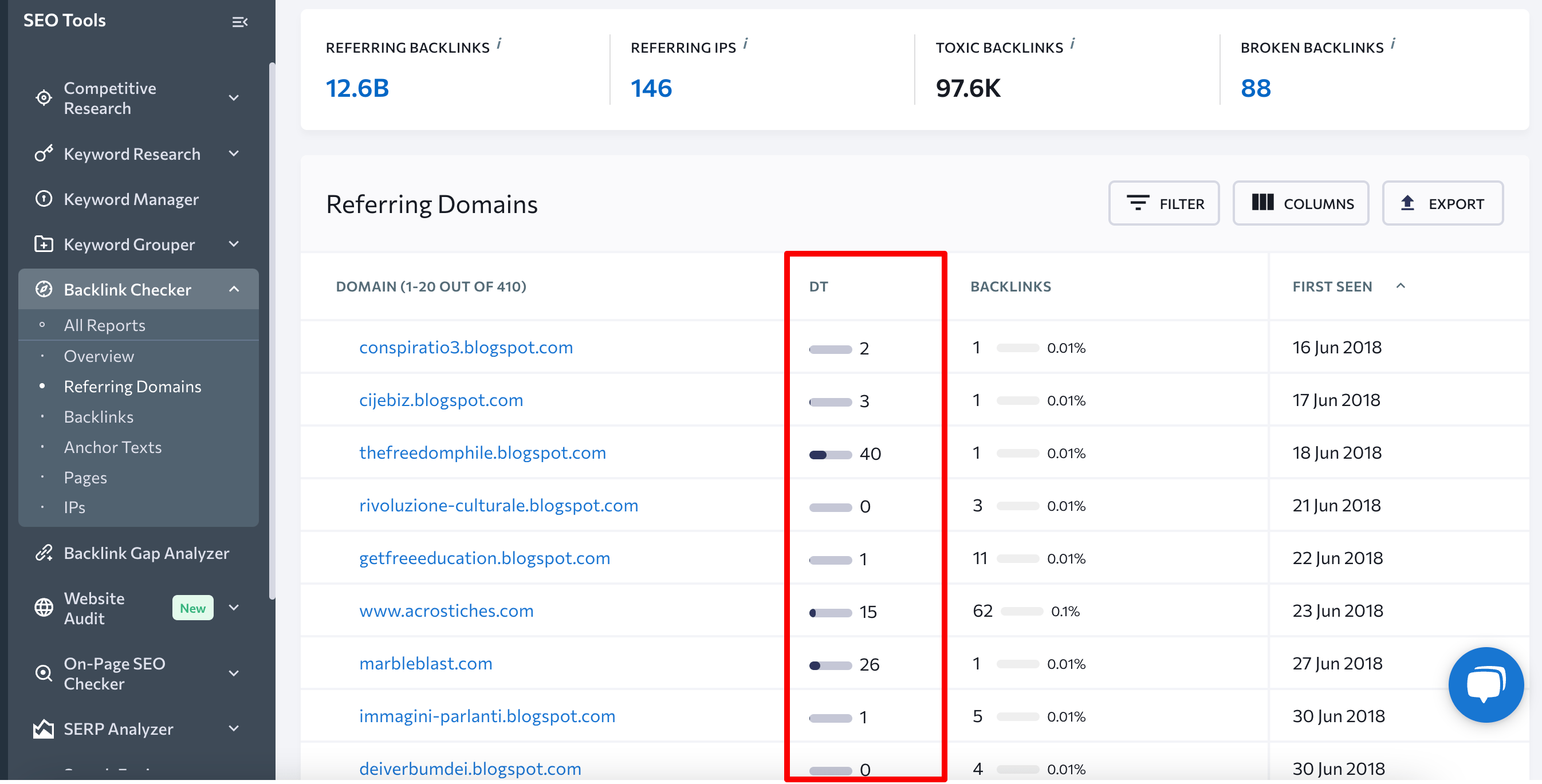
- Mismatched languages between the target and donor domains.
If the language of the site where the link comes from is different from the backlink, the site may not intend to provide useful content to users.
Example
The shoes.com website, which is in English, has backlinks from a Korean-language website.
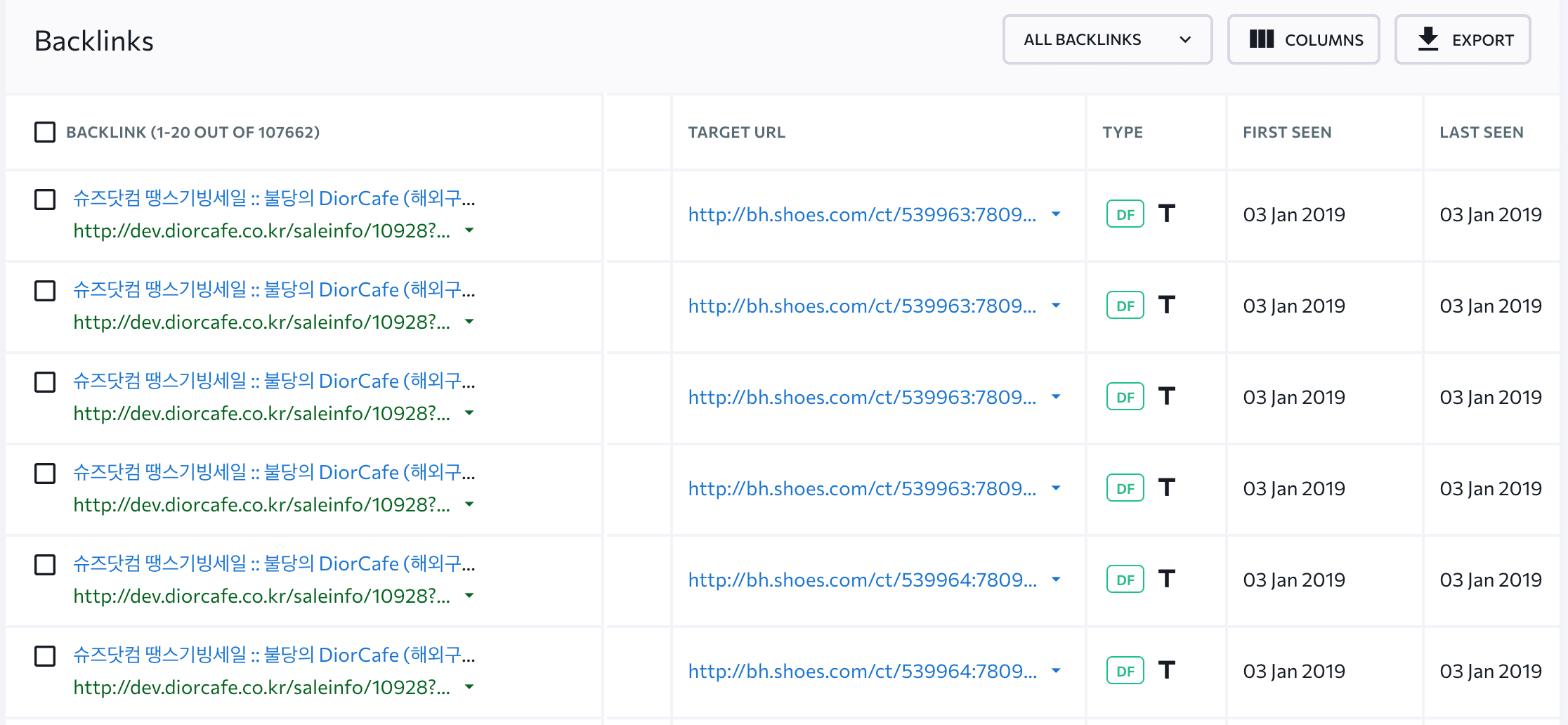
If the same backlink appears too many times on the same donor website, this could indicate that the backlinks have no value.
Example
The website emailfrombrands.com has more than 8K links to the shoes.com website.
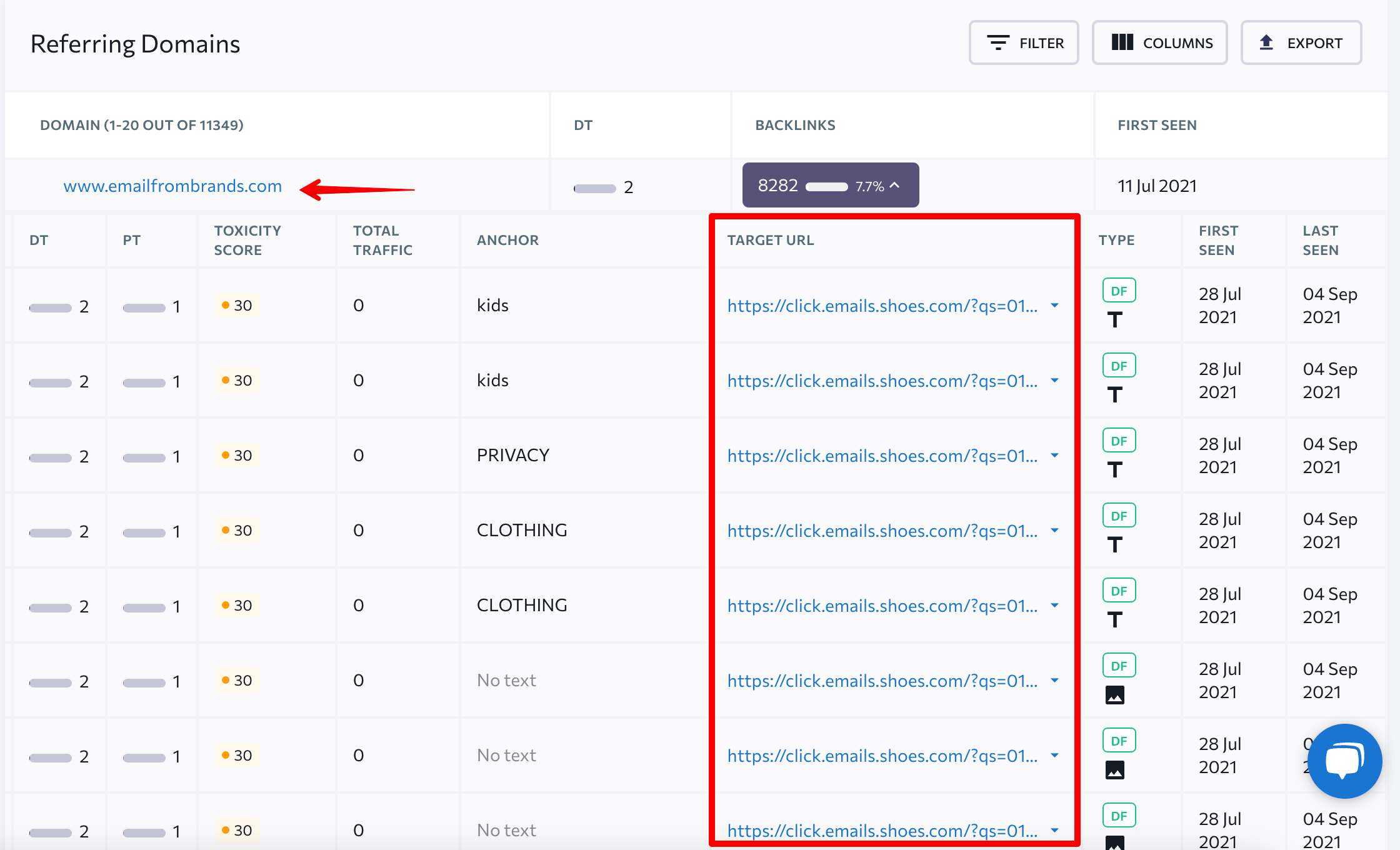
- Links are placed unnaturally.
Some links can be hidden or embedded in widgets dispersed over many sites, etc.
Example

Identifying toxic links with SE Ranking’s Backlink Checker
You can use a specialized tool to speed up the process of identifying toxic backlinks. For example, SEO Backlink Checker has an extensive database with over 3 trillion indexed backlinks and 262 million indexed domains. It allows you to analyze any backlink profile based on dozens of crucial criteria for assessing link quality.
For a quick assessment of link toxicity, you can use the Toxicity score, which is displayed next to each backlink in the Backlinks list. Sort backlinks by toxicity to see the most potentially harmful ones at the top of the list.
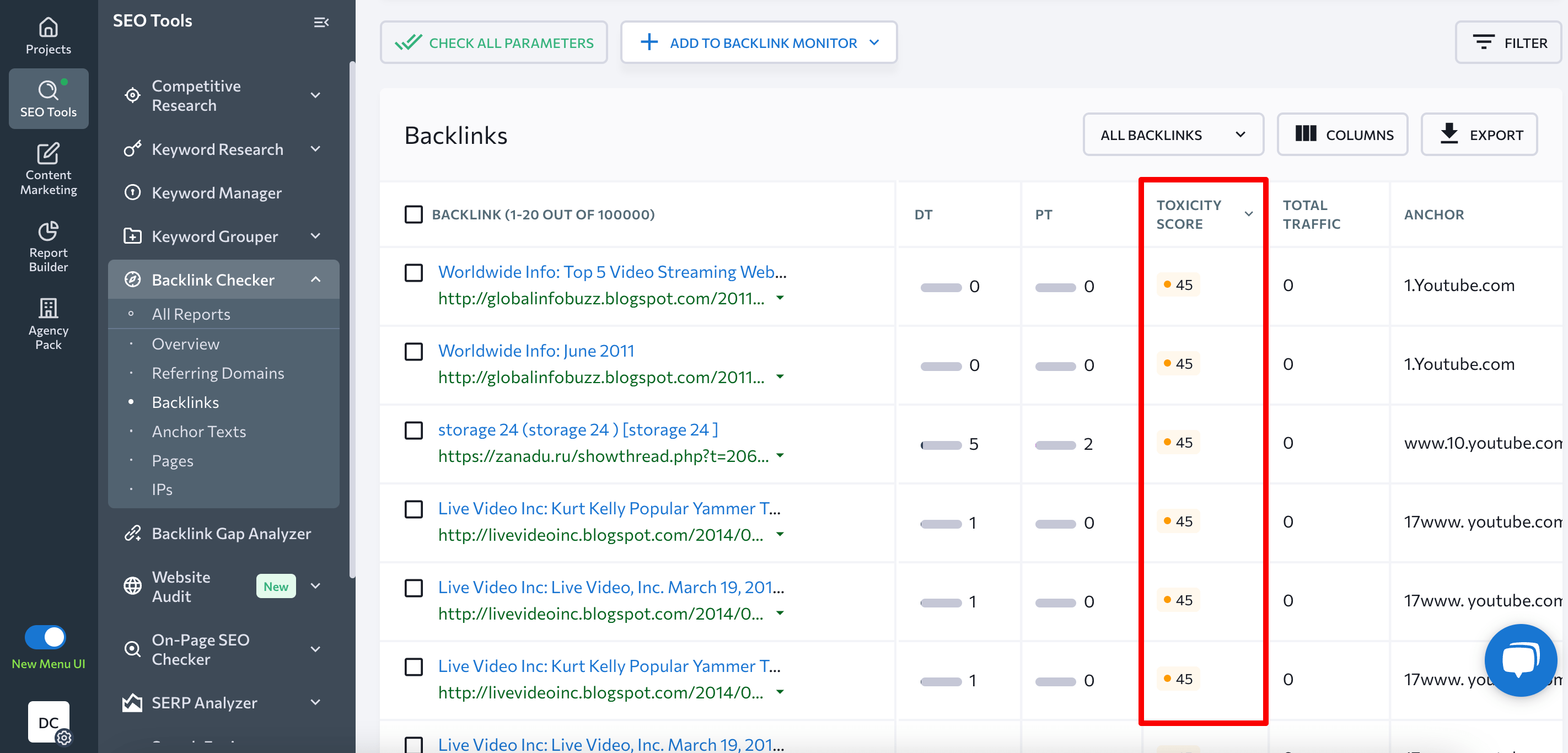
To be more certain that an existing link is detrimental to your site, you can conduct an in-depth analysis of the overall toxicity of the referring domain. Enter it into the search bar and click Analyze.
On the main dashboard, you’ll see the overall toxicity of the domain’s backlink profile along with the distribution of backlinks by toxicity level. If there are multiple links with high or medium toxicity, like in the screenshot below, it’s likely that this is a low-quality domain that won’t help you at all in your link building efforts.
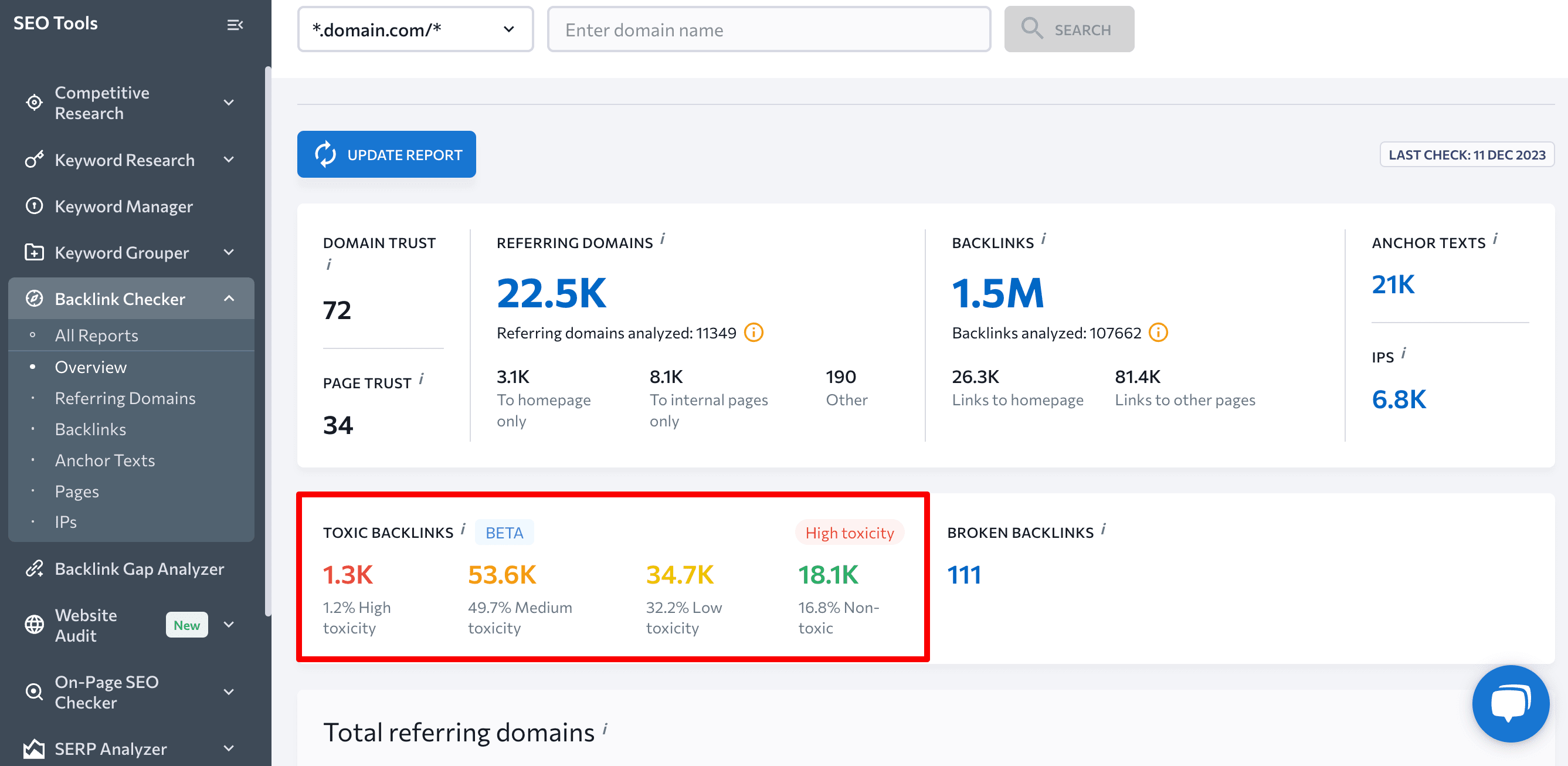
Next, analyze the referring domain based on the following criteria:
- Unique IPs: Make sure that links to the donor website come from various unique domains, not from low-quality PBNs. Google pays attention to the number of unique referring domains and uses their diversity to assess the site’s trustworthiness. The main dashboard of Backlink Checker displays the number of IPs and lets you compare them to the number of backlinks and referring domains.

- Referring domains and backlink growth dynamics: Check for any sudden spikes in the domain’s donor websites and backlink quantity. Ensure that the growth of link mass is natural and stable. Scroll down in the Backlink Checker to find this graph.
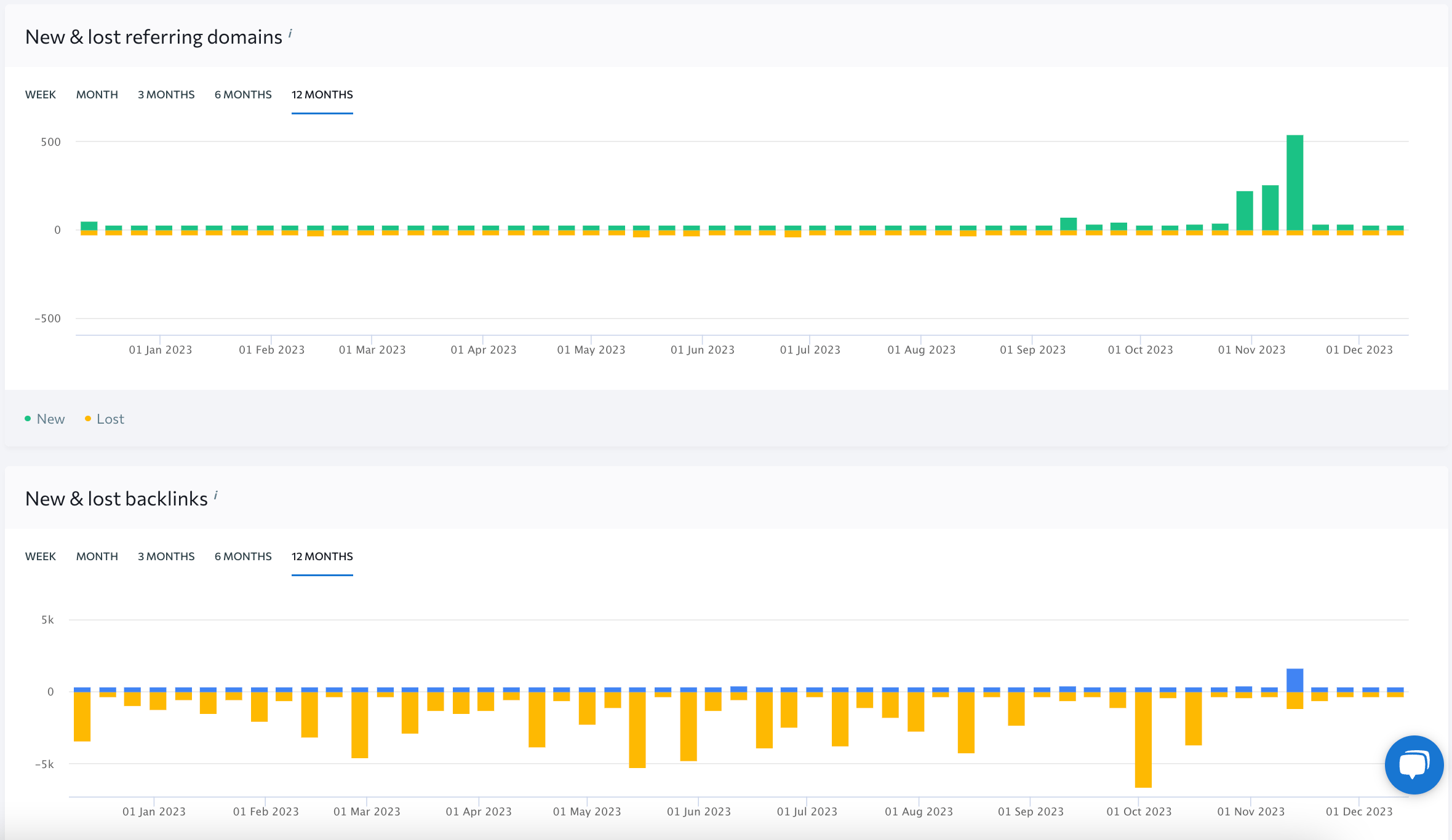
- Anchor text distribution: Analyze how diverse the anchor texts are. They should be of different types: natural, branded, commercial, etc. Keyword-rich anchor texts should not dominate. Displayed in the Anchor texts section of Backlink Checker is a list with all anchor texts whose top ones you can identify. The screenshot below shows a list of spammy and unnatural anchor texts.
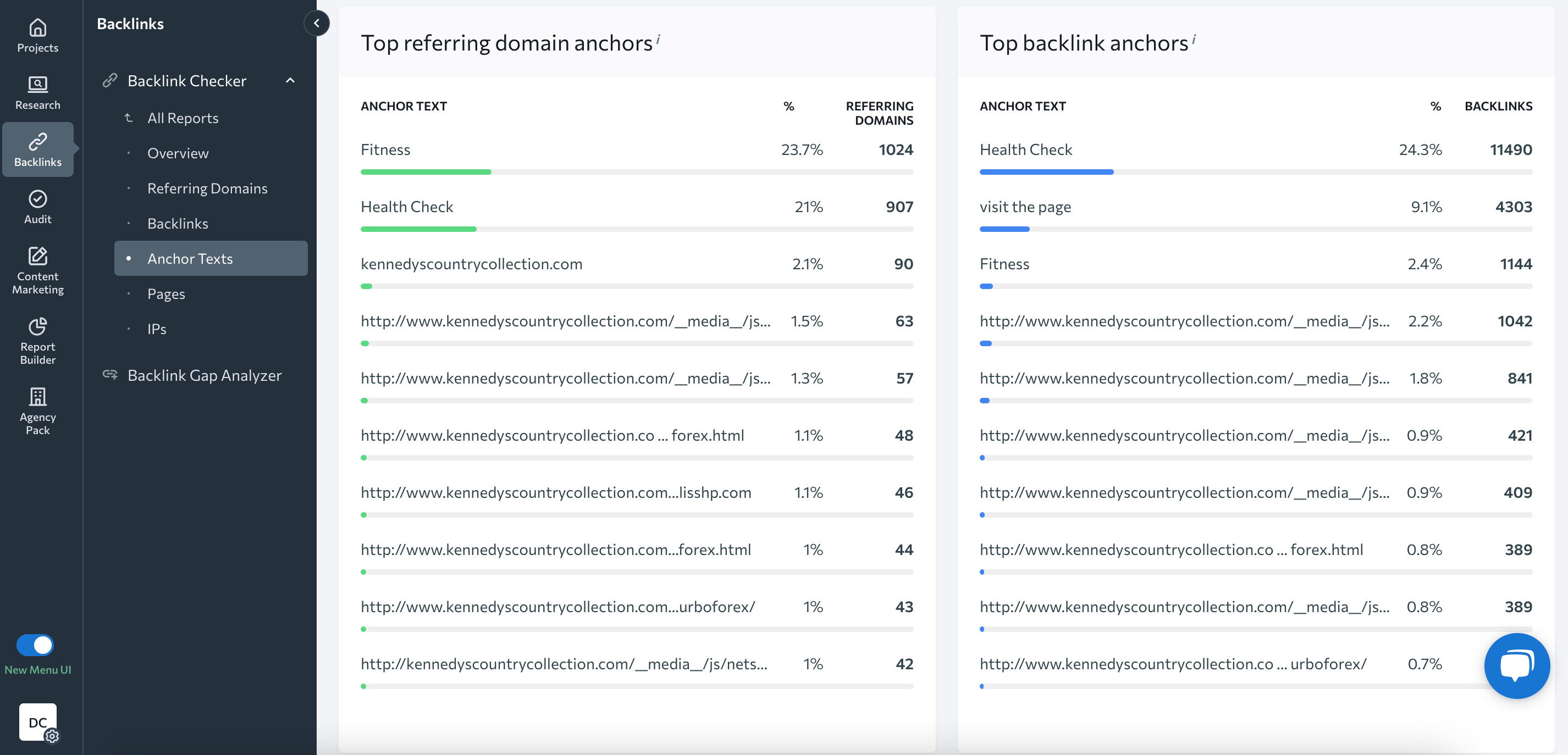
- Nofollow/dofollow ratio and country distribution: The distribution of nofollow/dofollow links should be balanced, with the majority of countries coming from regions relevant to both the referring domain and your site. You can find this information in the Backlink Checker’s Overview and Backlinks sections.
How to handle toxic backlinks
After identifying toxic links and compiling a list of them, you can take either ignore them, contact the referring site owner, or disavow them.
Google typically suggests that you ignore spammy links. This is because it has an advanced algorithm that is capable of identifying and disregarding them. Even so, if you’ve confirmed that your site has no other issues and are confident that the drop in search performance is related to the backlink profile, try contacting the site owners to delete specific links. If you’ve tried every possible measure without success and still have the experience described above, you should then try to disavow toxic backlinks. Let’s go over these steps in more detail.
Ignore toxic backlinks
If you don’t see any negative effects on your site’s SEO, there’s no need to do anything specific with unnatural links. As we discussed in the previous section, thanks to Google’s advanced algorithms, it can identify spammy links that you are not associated with. This means you can rely on it to detect and minimize the impact of irrelevant links.
If you’re worried that Google might view some of your backlinks as manipulative, such as recently purchasing a link, you can take steps to remove or disavow them.
Contact a site owner to delete the link
This is the ideal way to remove a toxic backlink. Whether you agreed to post an article with a link to your website or the link was placed without your consent, you can contact the source’s owner and ask them to remove the link.
Start by finding the website owner’s contact information. Once you locate it, send a polite email requesting that they remove the link. Explain why you are making the request, (for example, the link is from a low-quality website or irrelevant to your website’s content).
If the owner of the site is still unwilling to cooperate, you can move on to the next method.
Disavow toxic backlinks
To disavow a toxic link, you need to create a disavow file. This is a text file that lists all the links (URLs or entire domains) that you want Google to ignore. There are several ways to create a disavow file. For example, you can use a disavow file generator tool or create the file manually. Once you have created the disavow file, it’s time to submit it to Google Search Console.
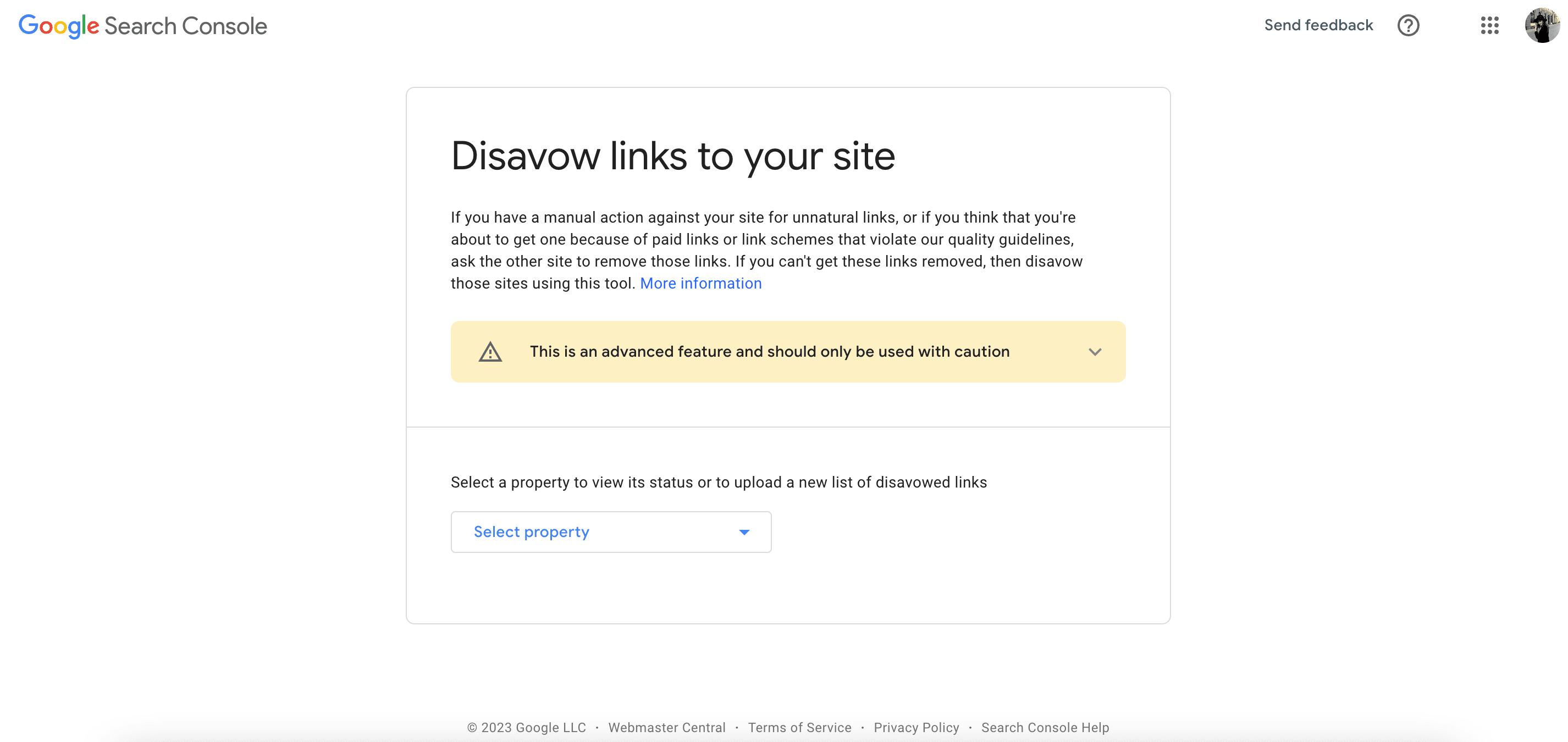
For more detailed steps, refer to this guide.
Even though disavowing a link does not guarantee that Google will remove it from its index, it does tell Google that you do not want the link to be associated with your website or influence its rankings.
But keep in mind: while many SEOs tend to use disavow links, Google historically has not been a fan of folks using the disavow file. John Mueller and Garry Illyes discussed this topic, with both agreeing that using disavow links typically does more harm than good.
How to avoid toxic backlinks and build quality ones
SEO, much like other fields, calls for a more proactive approach. Your best bet is to spend time on your initial analysis and select a healthy and long-lasting off-page strategy. This will yield greater results than dealing with toxic links and Google penalties after the fact.
If you want to receive a lot of trustworthy mentions, the golden rule is to create engaging, high-quality content that users find useful. Content like this generally gets organic backlinks that are approved by Google.
In other link-building strategies, such as guest blogging, try to select only relevant domains to cooperate with. The easiest and most effective way to find relevant domains is to identify them among your competitors. You can use the Backlink Gap Analyzer to accomplish this. This tool shows you domains that have links to your competitor’s site but not to yours. When selecting authoritative websites, you can use the tool’s Domain Trust score, among other criteria.
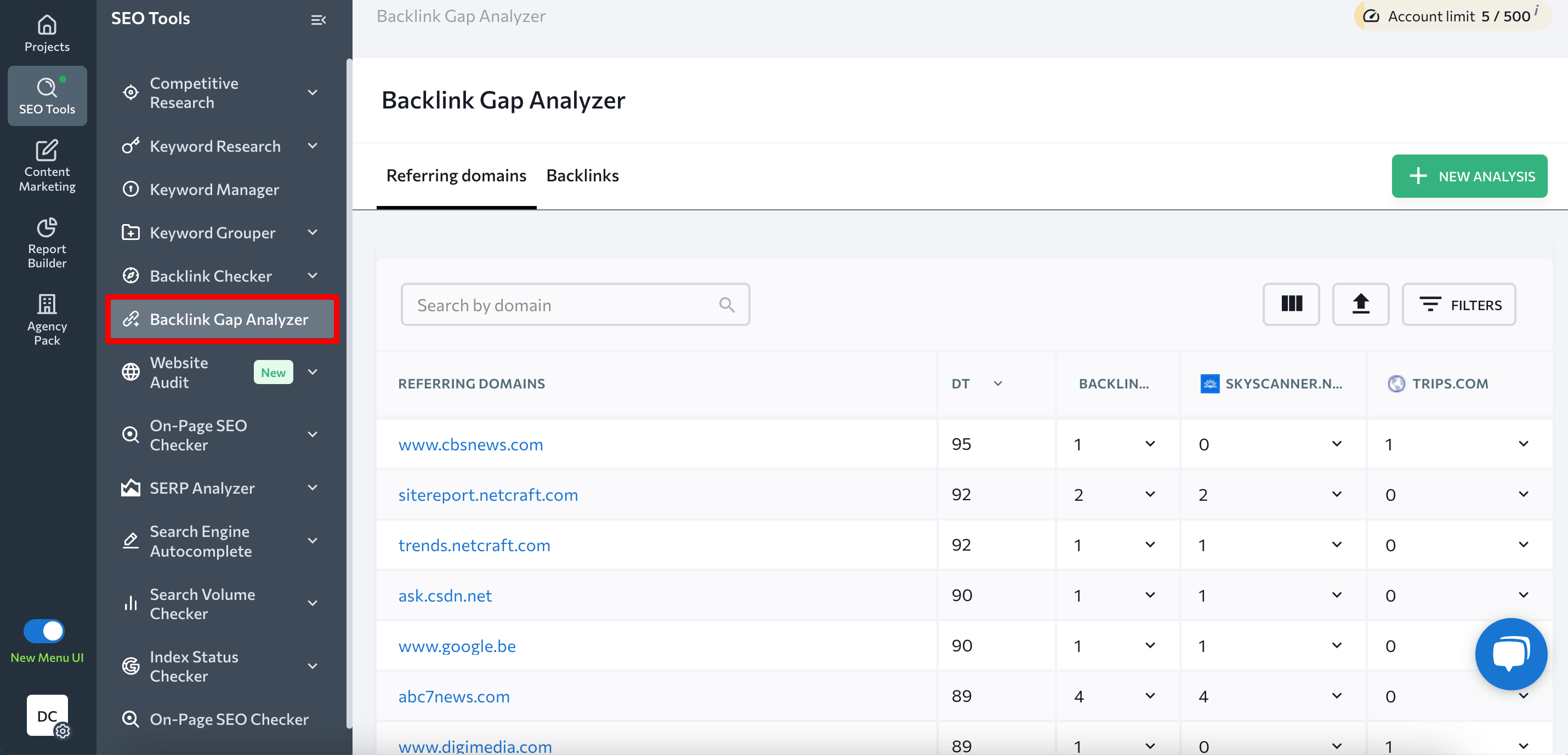
If you want to be even more certain about the referral domain’s quality, you can use the Backlink Checker to conduct a more in-depth analysis of the site’s backlink profile. We discussed which metrics to pay attention to in the previous section.
Keep in mind: it is also critical to follow Google’s guidelines when looking for backlink opportunities.
Regularly monitor your referring domains to make sure they are still in good standing and that your high-value backlinks are active. It’s even more important to do this after significant updates, when donor websites may be penalized.
You can use SE Ranking’s Backlinks Monitoring tool to automate this process. The tools let you import all of your backlinks manually from a CSV file or automatically from GSC. Alternatively, you can add them from the Backlink Checker. Once you’ve input your backlinks, the system will run parameter checks on a regular basis and notify you via email of any changes. While monitoring, focus on:
- Changes in Toxicity score.
- Backlink status. This will inform you if the link is found on the page, if it has the nofollow and noindex tags, or if it is blocked by robots.txt.
- Data showing whether a page with your backlink has dropped out of the Google index.
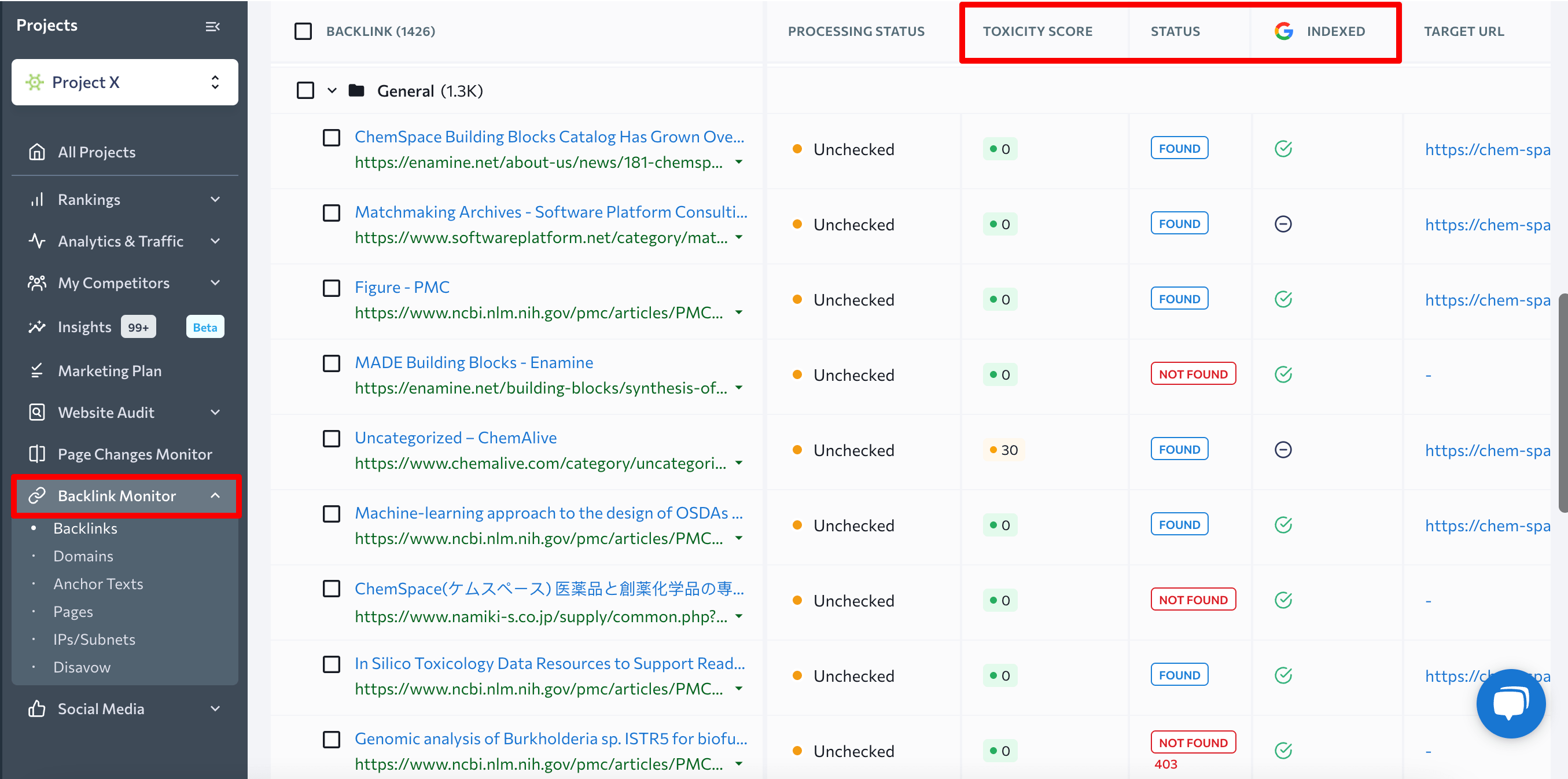
Summary
Knowing how to manage toxic backlinks is essential for keeping a healthy website link profile. While Google can identify and disregard most spammy links, it’s still good practice to stay vigilant and regularly monitor toxic backlinks whose presence can cause penalization, lower rankings and reduced organic traffic.
To identify toxic links, pay attention to various warning signals, including irrelevant or penalized referring domains, unnatural anchor texts, or unnatural backlink placements. Tools like SE Ranking’s Backlink Checker can assist in this process by providing metrics like the Toxicity Score, Domain Trust, and link dynamics.
If you notice a toxic link pointing to your site, you need to investigate it. If it’s a spontaneous spammy link, you can ignore it. However, if it is affecting your website’s visibility, you need to take measures to manage the risk. Consider reaching out to site owners and asking them to remove it. Alternatively, you can use the disavow tool, but only if you purchased links.
Your focus should ultimately be to build a strong backlink profile (with high-quality links from authoritative sources) while also creating valuable and relevant content. This comprehensive approach will not only improve your website’s rankings but also enhance its overall reputation and trustworthiness for users and search engines alike.
